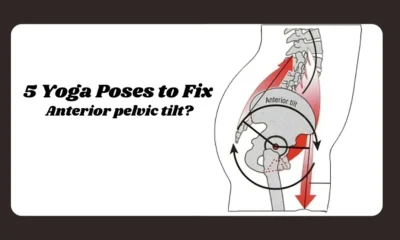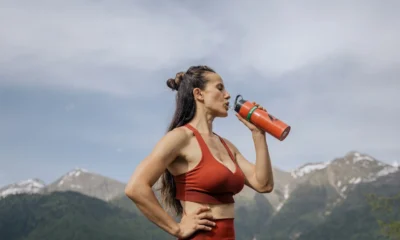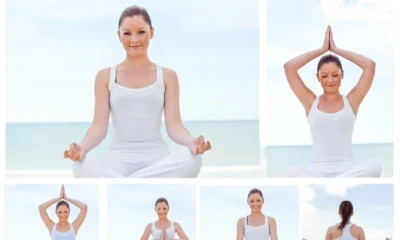YOGA
Unlocking the Power of Urdhva Dhanurasana: A Guide to Wheel Pose
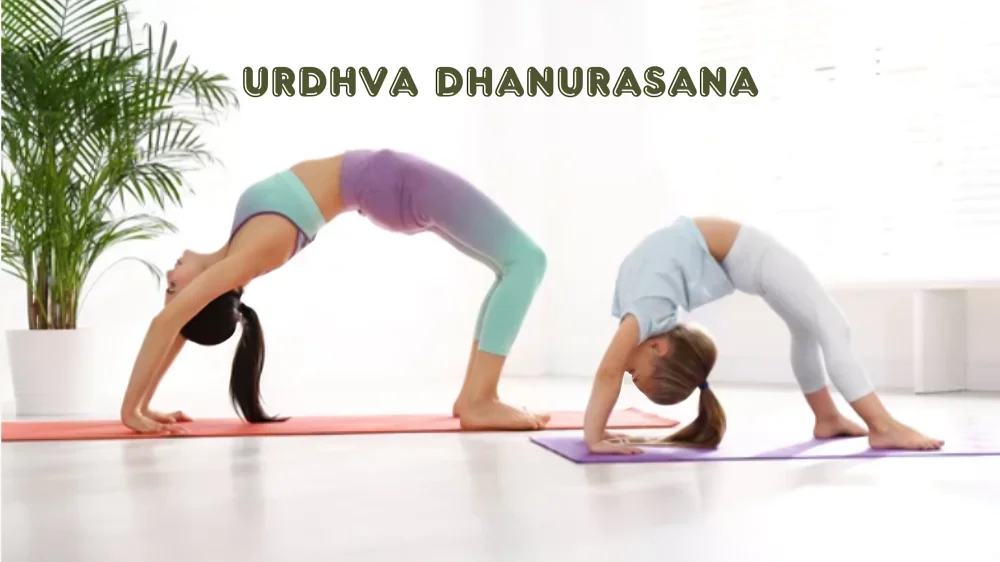
Are you looking to take your yoga practice to new heights? Look no further than Urdhva Dhanurasana, also known as Wheel Pose. This powerful backbend is not only a physical challenge, but it also holds the key to unlocking inner strength and flexibility.
Table of Contents
What is Urdhva Dhanurasana?
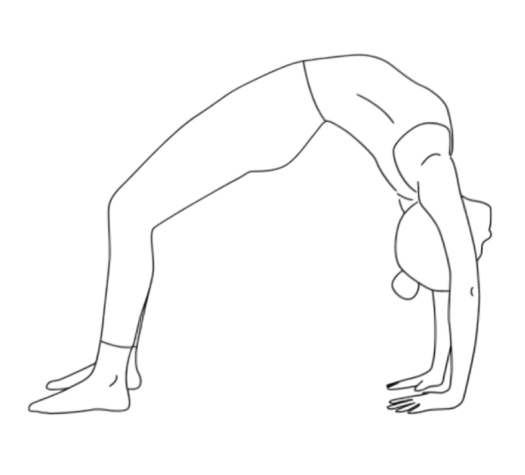
Urdhva Dhanurasana means an upward-facing Wheel Pose, resembling a wheel shape. It is a backbend posture in which the person lies on the back and rises into a deep backbend, lifting onto hands and feet pressing onto the floor. Strengthened and stretched muscles developed an energetic flow, and focused, strong, flexible actions were needed to hold the pose. Improvement toward posture with lung capacity, giving space to chest and shoulder, lengthening in front of the body. Urdhva Dhanurasana represents not only physical power but also spiritual depth.
History and Origins of Urdhva Dhanurasana
It is considered that the Urdhva Dhanurasana, or Wheel Pose, has come from these ancient yoga scriptures. The Urdhva Dhanurasana has been mentioned by both the Hatha Yoga Pradipika and the Gheranda Samhita as one of the powerful backbends. The Urdhva Dhanurasana lauds in ancient literature because it is said to awaken “Urdhva Dhanurasana” is developed from the combination of the words “Urdhva,” “Dhanu,” and “Asana” of the Sanskrit language, which stands for up, bow, and position. Flexibility, strength, and an open body and mind are developed in this asana. Advanced yogis saw this asana as a representation of energized space in the body that stretches and opens the solar plexus, used to open the heart center (Anahata Chakra), waking from dormancy of furthering their advance to enlightenment. Urdhva Dhanurasana, hence a basic posture in most traditions of yoga, invigorates the student to discover his or her full potential.
Understanding the anatomy and alignment of the pose
Understanding the anatomy and alignment of Urdhva Dhanurasana, or Wheel Pose, is key to unlocking its full potential.
- Urdhva Dhanurasana, or Wheel Pose, requires strength and flexibility.
- Targets spine, shoulders, wrists, hip flexors, and quadriceps.
- It focuses on lengthening the tailbone towards the knees and engaging the core for lower back protection.
- Proper alignment is crucial to prevent strain or injury.
- Grounding through feet and hands, lifting hips towards sky, and keeping elbows parallel.
- Maintaining a steady gaze to open chest fully.
- Harnessing the transformative power of each body element in Urdhva Dhanurasana.
Physical and Mental Benefits of Urdhva Dhanurasana
Urdhva Dhanurasana, or Wheel Pose, offers a wealth of physical benefits.
- Strengthens arms, wrists, abdomen, legs, and improves spine and shoulder flexibility.
- Engages the entire body, toning muscles and enhancing overall strength.
- Nurtures mental well-being by releasing pent-up emotions and tension stored in the upper body.
- Promotes feelings of rejuvenation and vitality by stimulating the nervous system.
- Regular practice cultivates courage, resilience, self-expression, and inner harmony.
Spiritual Benefits of Urdhva Dhanurasana
When exploring the spiritual realm of Urdhva Dhanurasana, practitioners often experience a deep connection between mind, body, and spirit.
- Facilitates emotional release and unblocks energy channels.
- Promotes vulnerability, inner strength, and courage.
- Physically opens heart, symbolizing love, compassion, and forgiveness.
- Balances Anahata chakra, fostering love, acceptance, and gratitude.
- Shifts ego layers, embracing true essence.
- Transcends into daily life through self-awareness and connection to something greater.
How to Safely Practice Urdhva Dhanurasana: Step by Step Guide
- Warm up body with gentle stretches and poses like Cat-Cow or Bridge Pose.
- Start by lying on back with knees bent and feet hip-width apart.
- Lift hips off the mat, starting on the crown of the head.
- Engage core muscles to protect lower back.
- Slowly straighten arms, lifting into a full backbend.
- Hold for a few breaths before lowering down one vertebra at a time.
- Listen to your body and ease out of sharp pain or discomfort.
- Consistent practice and alignment attention will deepen into the pose.
Modifications and Variations for Different Levels
Therefore, modifications and variations to Urdhva Dhanurasana are a vital aspect in relation to the practice.
- Beginners or anyone less flexible are able to have the blocks under the hands to support and help them gradually build up to the strength of the back muscles.
- The variations include placing a bolster under the shoulders and doing the asana with it. They can also come out with other variations, like lifting one leg or using a bolster underneath the shoulders.
- Advanced yogis may want to play with full expressions like the One-Arm Wheel Pose or dynamic movement by flowing in and out of the Wheel Pose from other postures like Chaturanga Dandasana.
Tips for a Stronger and Deeper Wheel Pose
- Engage core muscles.
- Practice backbends.
- Breathe deeply.
- Open hip flexors with stretches.
- Experiment with hand placements.
- Ensure proper alignment for safety.
Common Mistakes and How to Avoid Them
Common mistakes in Urdhva Dhanurasana pose can hinder progress and lead to injury. Common mistakes include the alignment of the chest by the collapsing of the chest towards the ground rather than lifting the chest towards the ceiling, wrong aligning of the feet, over-push into the pose without proper warming or flexibility, and losing control over breath. Maintain your core stable as you open up the heart space. Pay attention to whatever your body tells you, but don’t go any further than your body is ready to at this moment. By being mindful of these mistakes and implementing corrections, you can enhance your practice safely and effectively.
Precautions and Contraindications
Urdhva Dhanurasana is a very dynamic pose with so many benefits, but at the same time, its precautions and contraindications are extremely important. A yoga instructor should be consulted before including this asana in the routine for people under some sort of injury. Unless the pregnant woman is very much into her practice and has been given a nod by her healthcare provider, she would be best advised to leave the deep backbends be. And one must think safety and always listen to your body. Mind you, everybody is different, so don’t push yourself more than you can.
Preparation Poses for Urdhva Dhanurasana
Before the exciting Urdhva Dhanurasana, prepare with a series of chest-opening poses for the shoulders and hip flexors.
- Bhujangasana (Cobra Pose): Strengthens spine, opens chest, promotes breathing, and increases lung capacity.
- Setu Bandha Sarvangasana (Bridge Pose): It helps relaxation, assists in better metabolism, lowers stress, encourages the flexibility of the spine, and serves to relieve lower back problems.
- Urdhva Mukha Svanasana (Upward-Facing Dog Pose): Extends the body, raising the chest and upper body off the floor, aiding one to get up to good posture, flexibility.
- Salamba Bhujangasana (Sphinx Pose): Strengthens spine, improves posture, and alleviates lower back pain.
- Salabhasana (Locust Pose): Strengthens the muscles of the back, tones the whole body, and is good for cases of lower back pain along with suppleness of the spine.
- Dhanurasana (Bow Pose): Tones and strengthens the muscles of the back, opens the chest and shoulder muscles, helps to improve digestion, stimulates the abdomen organs, increases flexibility, and gives a new surge of energy.
Counter poses
Counter poses are an essential part of any yoga practice, helping to balance out the body after challenging poses like Urdhva Dhanurasana. These poses help release tension in the muscles and promote relaxation.
- Paschimottanasana, or Seated Forward Bend, is a great counter pose for Wheel Pose.
- Ananda Balasana, or Happy Baby Pose, opens up the hips and releases lower back tension.
- Balasana, or Child’s Pose, is a restorative posture promoting relaxation.
And incorporating the counter poses in your practice will create overall harmony with your experience on the mat in creating balance, both physical and mental.
Conclusion
As you can see, Urdhva Djsonasna, or the Wheel Pose, is much more than simply a physical pose on the mat. Such a posture would enable one to gain more flexibility, strength, and be in an overall better condition of well-being. They should always listen to the body and modify the pose where need be, at the same time pushing the self to higher levels.
-

 GENERAL5 days ago
GENERAL5 days agoChristofle – For Those Who Dream of Family Heirloom Silver
-

 GENERAL2 months ago
GENERAL2 months agoUncovering the World of кинокрадко: The Dark Side of Film Piracy
-

 GENERAL3 weeks ago
GENERAL3 weeks agoUnveiling the Art of преводсч: How Translators Bridge Language Barriers
-

 SPORTS2 months ago
SPORTS2 months agoDiscover the World of Football with Streameast: Watch Your Favorite Leagues and Tournaments

